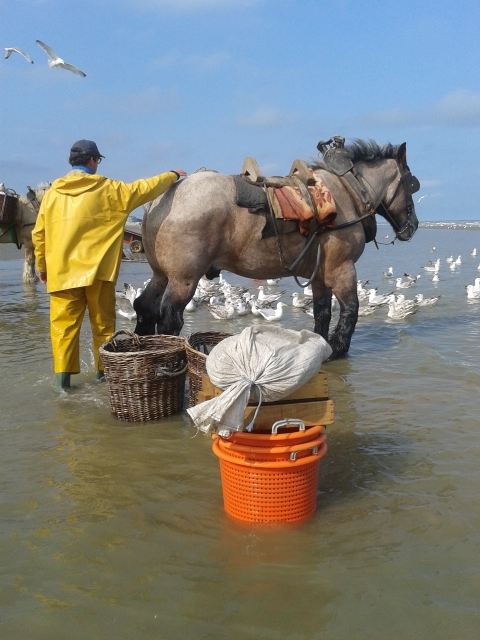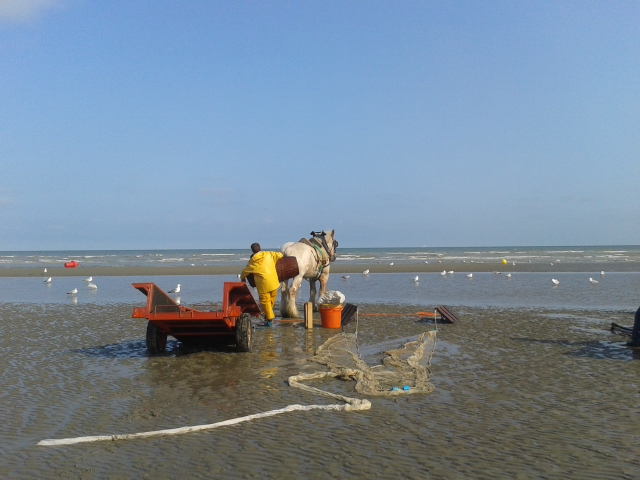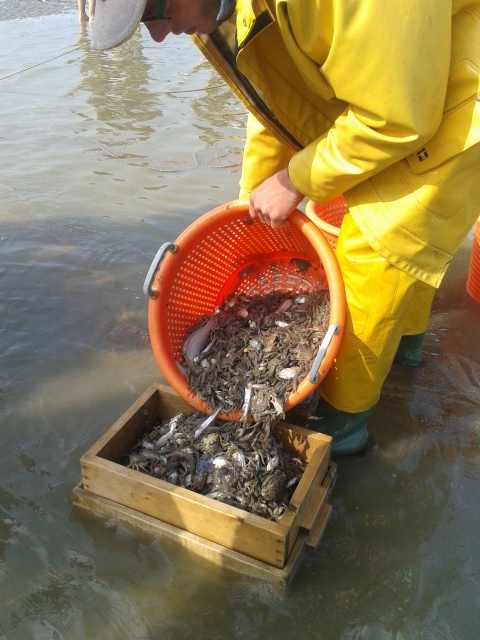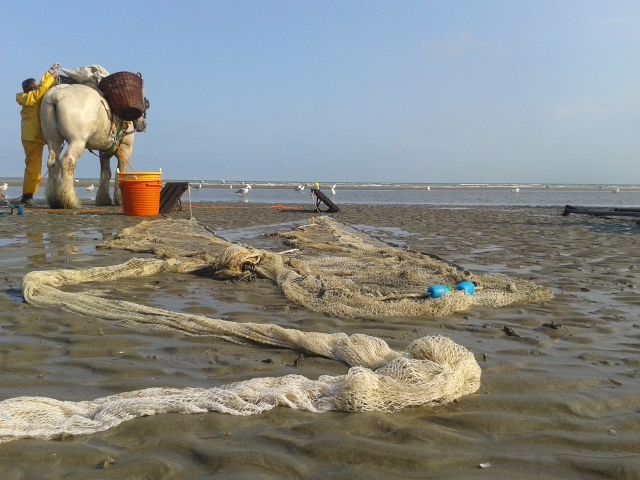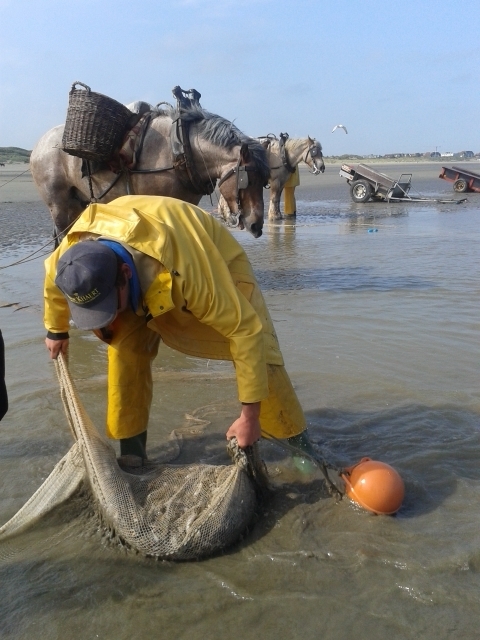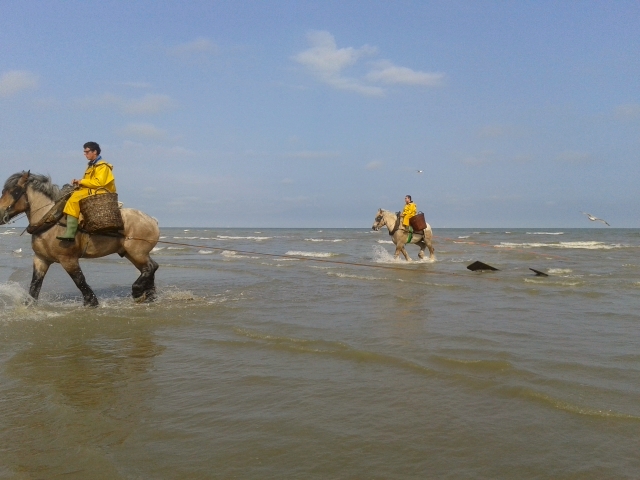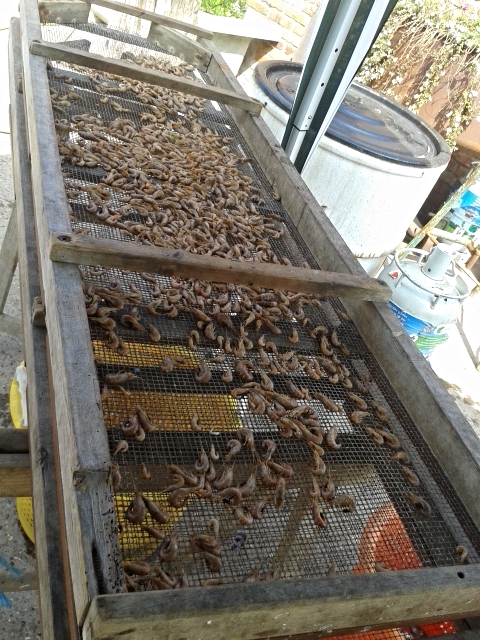When we consider something traditional, immediately our minds go to practices that have represented a group of people for a long time. The term tradition itself has different shades of meaning. Transmitted across generations, both in written and oral form, customs, habits, religious beliefs or gastronomical patterns can all be traditions. Over time, particularly in gastronomic culture, traditions often go one of two ways: they become a national symbol, or they are niche customs at risk of disappearance. Fishing, for instance, comes in many forms: trawling, nets, poles, and longlines, all recognized as traditional methods. However, on the southern coast of Belgium, there is a popular knowledge of fishing for shrimp on horseback, nothing to do with the centennial history of beer, chocolate, and frites that we often associate with the little country. Every Belgian is proud of these three gastronomic traditions, which remain in my mind after the six months I spent in Bruxelles, but no one told me about the tiny shrimp.
We visited the seaside of Oostduinkerke (or as we called it “the beautiful place we are in”) on a sweltering day in July, and were greeted by welcome gusts of wind. While we were waiting on the shore, known as Astridplein beach, two fishermen appeared on their big Brabant horses. In spite of their powerfulness, weighing over eight hundred kilos, they trotted with grace onto the beach, followed by a two-wheeled, medium-sized wagon carrying all the fishing equipment. The fishermen, called paardenvissers in Flemish, then began to organize methodically every detail, displaying their wisdom: a funnel-shaped net was attached to the harness to be dragged behind the horses, lined on the bottom with a heavy chain. Dominique Vandendriessche, the young fisherman we met, explained in his Flemish-accent: “The shrimp are little beasts who live in the sand and that’s why we have to attach the chain. It drags on the bottom and the shrimp jump up into the net.” When the net is full, the catch is placed in wicker baskets settled on each side of the saddle. No longer than half an hour later, they were so far from us that we could not see what was happening on the shoal. Once the water arrived at the horses’ belly level and the stocky animals were not able to walk on the sand anymore, the fishermen began to drag the nets back towards the shore. A small crowd of tourists and happy kids gathered around as the fishermen sifted through all their catch on the seashore. Unbelievably, all they want are the little grey shrimp - rikze garnalen in Flemish - which are the rare speciality of the sea. All the rest, including many soles, little fishes similar to sardines, and big crabs that usually eat the shrimp, were thrown to the starving seagulls flying over our heads.
Fishing with draft horses has its origins in the Middle Ages throughout the coasts of France, England, and the Netherlands. The horses were prized for their elegance and strength, and the breed was exported to the United States up until World War II. Nowadays, the fishing technique survives only in the tiny village of Oostduinkerke, more for touristic reasons than for pragmatic ones, because none of the remaining ten fishermen - the oldest among them is 89 years old - wants it to disappear. Of them, only Dominique makes his livelihood from the shrimp at the family restaurant, while the other nine fish for tourism and to sell the shrimp at the local fish shops. Almost every day from June to October, they come to the beach to fish. The fishing season is limited because of the freezing water temperatures during winter. Even if it is something concentrated in summer - though summer is a strong word for Belgium - the shrimp are a significant part of the gastronomic culture of the country.
“According to legend," Dominique told us, “in the past the shrimp were used only to fertilize the soil. At some point people tried to cook them and thus their particular taste was discovered, they began to fish the shrimp for a gastronomic purpose.” Today it is common to find both fresh shrimp and frozen shrimp croquettes at the local fish market, or parboiled shrimp to eat immediately. That was exactly how we ate them at Dominique’s family restaurant, where they serve the shrimp to guests. Before boiling them, he and his family spread the contents of the wicker basket on a big wood board, picking out only the little shrimp. Then, they were thrown directly into a giant pot, where the water was slowly boiling. After only five minutes, they became pink and were dropped on a big table around which we were waiting to taste. Dominique also showed us how to eat, taking one baby shrimp in his fingers. He bent it until the shell split in the middle. Then, he held the head strongly with two fingers and pulled the rest of the body out. They were the tiniest animals - under two inches - I’ve ever seen (and eaten), whose delicate taste surprised me.
Tradition means sharing experience and knowledge: to defend part of their culture, these few fishermen work every day to keep the tradition alive. Now, my little contribution is to share the 500-year-old story, and to remember that day as one of the most fascinating of the last few years, giving another identity to le plat pays.
Esther graduated with a degree in Language and Foreign Literature from the University of Bologna - in English, Spanish, and Hungarian. A queen of the Italian kitchen, she lives by the motto "when in doubt, fry" and is fascinated by the world of craft beers.

